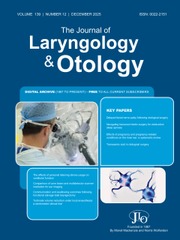No CrossRef data available.
Article contents
Exploring attitudes towards hearing aid use among middle-aged adults with hearing loss: a quantitative and validation study
Published online by Cambridge University Press: 21 October 2024
Abstract
This study aimed to translate and validate the Attitude towards Loss of Hearing Questionnaire into the Arabic language and explore attitudes of working-age adults towards their hearing loss and hearing aids.
A cross-sectional investigation was conducted of 237 middle-aged Jordanians (18-65 years old) who have hearing loss using an online questionnaire during the period of October to December 2023.
The specialized experts in the field had an 88 per cent acceptance rate on all items of the Attitude towards Loss of Hearing Questionnaire. Five factors were loaded and explained a total of 58.37 per cent, confirming the validity of the Attitude towards Loss of Hearing Questionnaire Arabic version. All subscales of the Attitude towards Loss of Hearing Questionnaire surpass the normal values of Cronbach alpha. Several predictors of attitude towards loss of hearing were noted, including educational level, age, family members, income and marital status.
Addressing barriers to hearing aid use, such as psychosocial and economic, can improve hearing support and increase healthcare focus and collaboration among clinicians and stakeholders globally.
Information
- Type
- Main Article
- Information
- Copyright
- © The Author(s), 2024. Published by Cambridge University Press on behalf of J.L.O. (1984) LIMITED
Footnotes
Margaret Zuriekat takes responsibility for the integrity of the content of the paper

